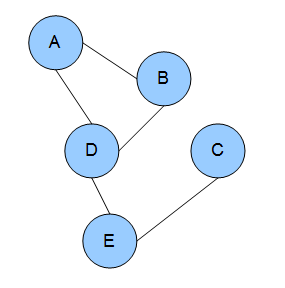
In mathematics, a tensor is an algebraic object that describes a multilinear relationship between sets of algebraic objects related to a vector space. Tensors may map between different objects such as vectors, scalars, and even other tensors. There are many types of tensors, including scalars and vectors, dual vectors, multilinear maps between vector spaces, and even some operations such as the dot product. Tensors are defined independent of any basis, although they are often referred to by their components in a basis related to a particular coordinate system.

In the physical science of dynamics, rigid-body dynamics studies the movement of systems of interconnected bodies under the action of external forces. The assumption that the bodies are rigid simplifies analysis, by reducing the parameters that describe the configuration of the system to the translation and rotation of reference frames attached to each body. This excludes bodies that display fluid, highly elastic, and plastic behavior.
Gerard A. "Gerry" Salton was a Professor of Computer Science at Cornell University. Salton was perhaps the leading computer scientist working in the field of information retrieval during his time, and "the father of Information Retrieval". His group at Cornell developed the SMART Information Retrieval System, which he initiated when he was at Harvard. It was the very first system to use the now popular vector space model for Information Retrieval.
Latent semantic analysis (LSA) is a technique in natural language processing, in particular distributional semantics, of analyzing relationships between a set of documents and the terms they contain by producing a set of concepts related to the documents and terms. LSA assumes that words that are close in meaning will occur in similar pieces of text. A matrix containing word counts per document is constructed from a large piece of text and a mathematical technique called singular value decomposition (SVD) is used to reduce the number of rows while preserving the similarity structure among columns. Documents are then compared by cosine similarity between any two columns. Values close to 1 represent very similar documents while values close to 0 represent very dissimilar documents.

In the domain of physics and probability, a Markov random field (MRF), Markov network or undirected graphical model is a set of random variables having a Markov property described by an undirected graph. In other words, a random field is said to be a Markov random field if it satisfies Markov properties. The concept originates from the Sherrington–Kirkpatrick model.
A language model is a probability distribution over sequences of words. Given any sequence of words of length m, a language model assigns a probability to the whole sequence. Language models generate probabilities by training on text corpora in one or many languages. Given that languages can be used to express an infinite variety of valid sentences, language modeling faces the problem of assigning non-zero probabilities to linguistically valid sequences that may never be encountered in the training data. Several modelling approaches have been designed to surmount this problem, such as applying the Markov assumption or using neural architectures such as recurrent neural networks or transformers.
In information retrieval, tf–idf, short for term frequency–inverse document frequency, is a numerical statistic that is intended to reflect how important a word is to a document in a collection or corpus. It is often used as a weighting factor in searches of information retrieval, text mining, and user modeling. The tf–idf value increases proportionally to the number of times a word appears in the document and is offset by the number of documents in the corpus that contain the word, which helps to adjust for the fact that some words appear more frequently in general. tf–idf is one of the most popular term-weighting schemes today. A survey conducted in 2015 showed that 83% of text-based recommender systems in digital libraries use tf–idf.
Probabilistic latent semantic analysis (PLSA), also known as probabilistic latent semantic indexing is a statistical technique for the analysis of two-mode and co-occurrence data. In effect, one can derive a low-dimensional representation of the observed variables in terms of their affinity to certain hidden variables, just as in latent semantic analysis, from which PLSA evolved.
In natural language processing, Latent Dirichlet Allocation (LDA) is a generative statistical model that explains a set of observations through unobserved groups, and each group explains why some parts of the data are similar. The LDA is an example of a topic model. In this, observations are collected into documents, and each word's presence is attributable to one of the document's topics. Each document will contain a small number of topics.
In data analysis, cosine similarity is a measure of similarity between two sequences of numbers. For defining it, the sequences are viewed as vectors in an inner product space, and the cosine similarity is defined as the cosine of the angle between them, that is, the dot product of the vectors divided by the product of their lengths. It follows that the cosine similarity does not depend on the magnitudes of the vectors, but only on their angle. The cosine similarity always belongs to the interval For example, two proportional vectors have a cosine similarity of 1, two orthogonal vectors have a similarity of 0, and two opposite vectors have a similarity of -1. The cosine similarity is particularly used in positive space, where the outcome is neatly bounded in .
Oja's learning rule, or simply Oja's rule, named after Finnish computer scientist Erkki Oja, is a model of how neurons in the brain or in artificial neural networks change connection strength, or learn, over time. It is a modification of the standard Hebb's Rule that, through multiplicative normalization, solves all stability problems and generates an algorithm for principal components analysis. This is a computational form of an effect which is believed to happen in biological neurons.
Term discrimination is a way to rank keywords in how useful they are for information retrieval.
Vector space model or term vector model is an algebraic model for representing text documents as vectors of identifiers. It is used in information filtering, information retrieval, indexing and relevancy rankings. Its first use was in the SMART Information Retrieval System.

Learning to rank or machine-learned ranking (MLR) is the application of machine learning, typically supervised, semi-supervised or reinforcement learning, in the construction of ranking models for information retrieval systems. Training data consists of lists of items with some partial order specified between items in each list. This order is typically induced by giving a numerical or ordinal score or a binary judgment for each item. The goal of constructing the ranking model is to rank new, unseen lists in a similar way to rankings in the training data.
In natural language processing and information retrieval, cluster labeling is the problem of picking descriptive, human-readable labels for the clusters produced by a document clustering algorithm; standard clustering algorithms do not typically produce any such labels. Cluster labeling algorithms examine the contents of the documents per cluster to find a labeling that summarize the topic of each cluster and distinguish the clusters from each other.
The Extended Boolean model was described in a Communications of the ACM article appearing in 1983, by Gerard Salton, Edward A. Fox, and Harry Wu. The goal of the Extended Boolean model is to overcome the drawbacks of the Boolean model that has been used in information retrieval. The Boolean model doesn't consider term weights in queries, and the result set of a Boolean query is often either too small or too big. The idea of the extended model is to make use of partial matching and term weights as in the vector space model. It combines the characteristics of the Vector Space Model with the properties of Boolean algebra and ranks the similarity between queries and documents. This way a document may be somewhat relevant if it matches some of the queried terms and will be returned as a result, whereas in the Standard Boolean model it wasn't.
In machine learning, a Ranking SVM is a variant of the support vector machine algorithm, which is used to solve certain ranking problems. The ranking SVM algorithm was published by Thorsten Joachims in 2002. The original purpose of the algorithm was to improve the performance of an internet search engine. However, it was found that Ranking SVM also can be used to solve other problems such as Rank SIFT.
In applied statistics and geostatistics, regression-kriging (RK) is a spatial prediction technique that combines a regression of the dependent variable on auxiliary variables with interpolation (kriging) of the regression residuals. It is mathematically equivalent to the interpolation method variously called universal kriging and kriging with external drift, where auxiliary predictors are used directly to solve the kriging weights.
In natural language processing and information retrieval, explicit semantic analysis (ESA) is a vectoral representation of text that uses a document corpus as a knowledge base. Specifically, in ESA, a word is represented as a column vector in the tf–idf matrix of the text corpus and a document is represented as the centroid of the vectors representing its words. Typically, the text corpus is English Wikipedia, though other corpora including the Open Directory Project have been used.
In statistics, linear regression is a linear approach for modelling the relationship between a scalar response and one or more explanatory variables. The case of one explanatory variable is called simple linear regression; for more than one, the process is called multiple linear regression. This term is distinct from multivariate linear regression, where multiple correlated dependent variables are predicted, rather than a single scalar variable.







